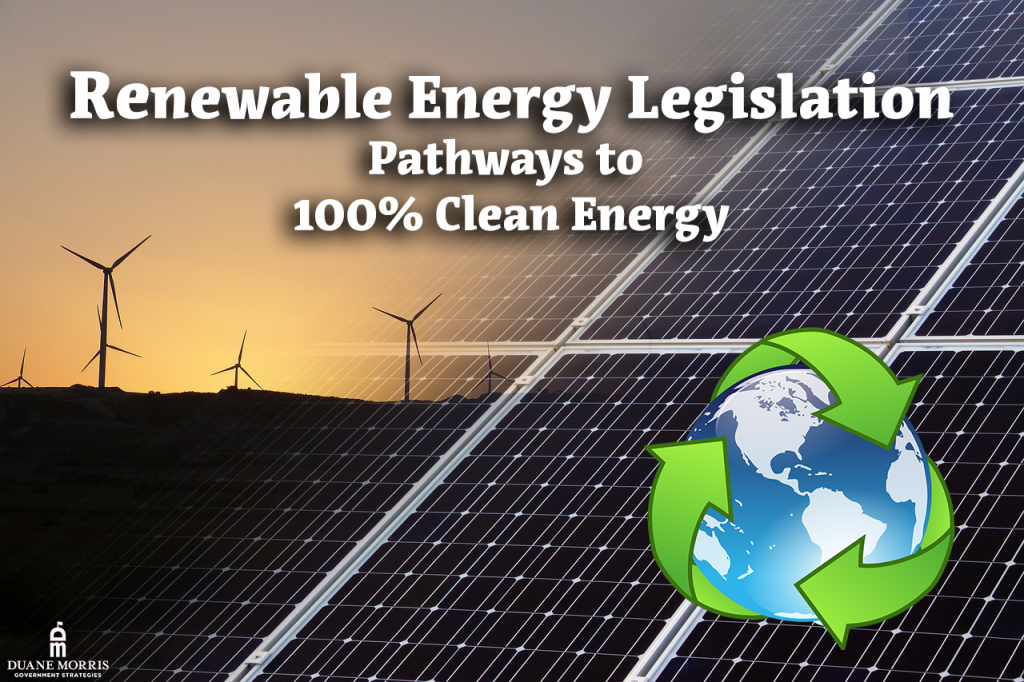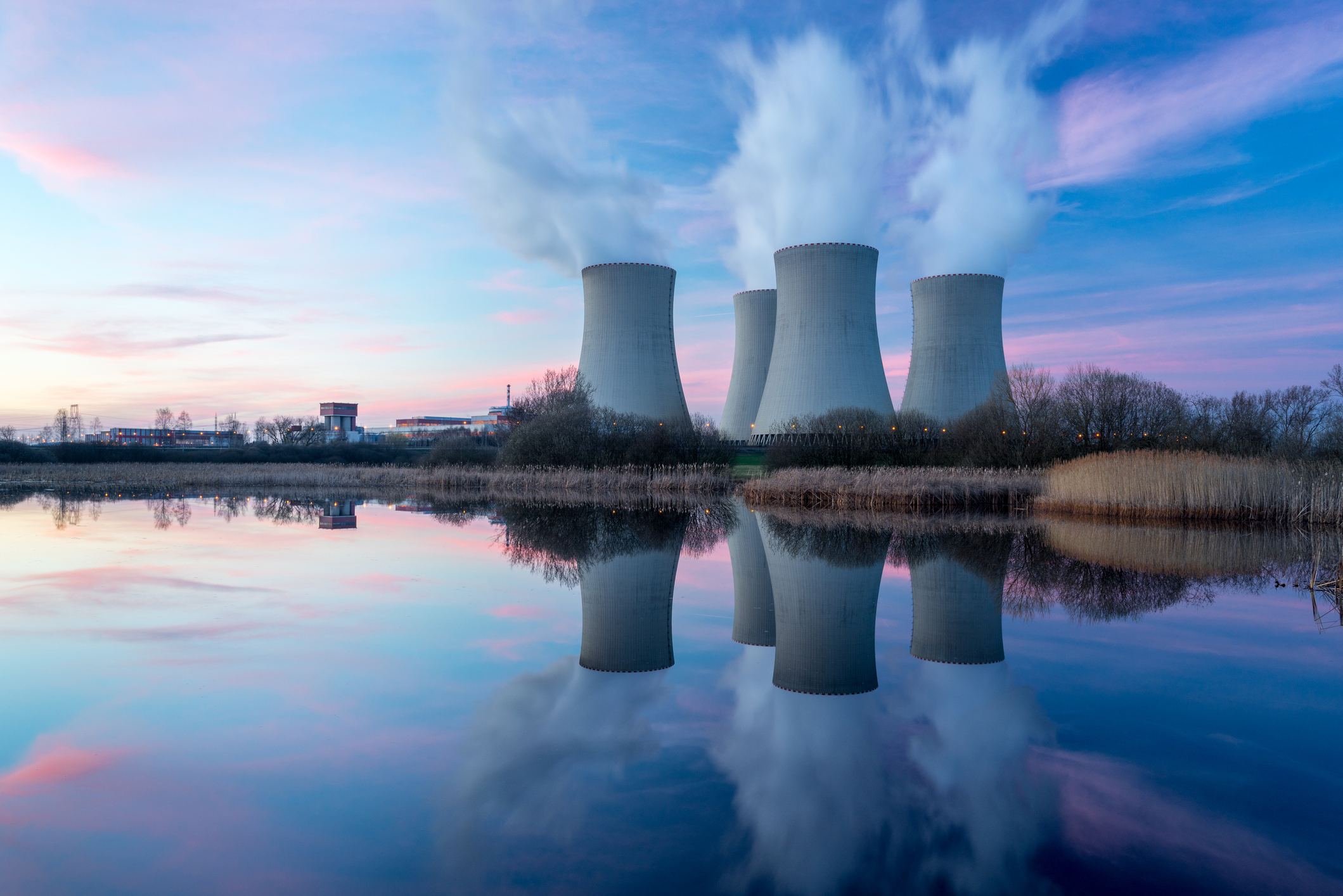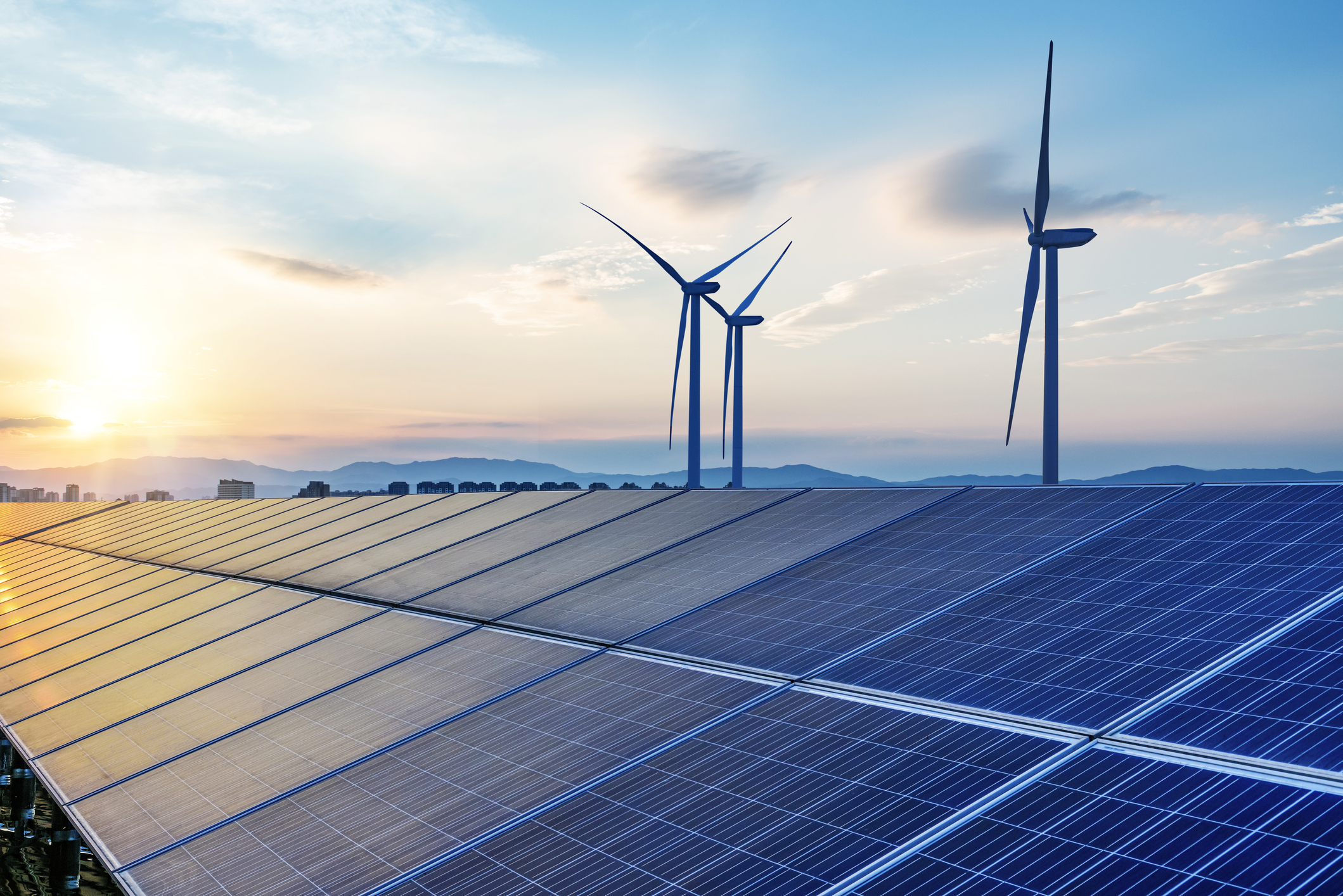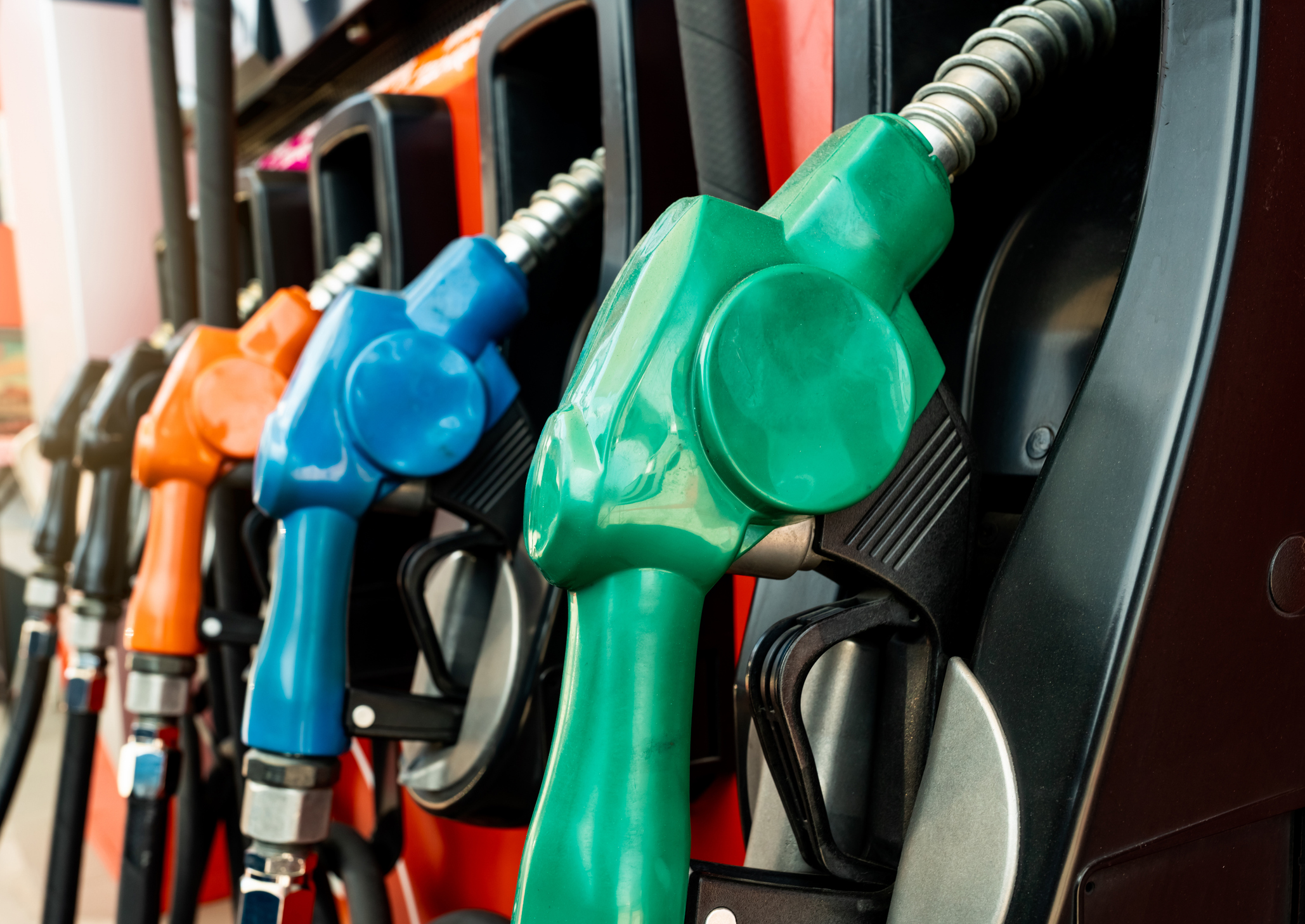
Renewable portfolio standards (RPSs) are regulatory mandates to increase the production of energy from renewable sources such as wind, solar, biomass and other alternatives to fossil and nuclear electric generation. States have been actively making changes to their RPSs through renewable energy legislation. Generally, RPSs require that a specified percentage of electricity that utilities sell come from renewable energy sources. A report from 2018 found that roughly half of all renewable electricity generation growth and capacity in the last nearly two decades has been associated with state RPS requirements. Some lawmakers are even looking to reach 100% renewable energy in their states.
Twenty-nine states, along with the District of Columbia, and three territories, have an RPS. According to the NRDC, six states, the District of Columbia, and Puerto Rico are committed by state law to achieving 100% carbon-free electricity by 2050 or sooner, with another ten states having non-binding goals of reaching 100% renewable energy.
Massachusetts
Last year, lawmakers introduced H. 2836, which would transition the Commonwealth to 100% clean, renewable energy by 2045, including the energy consumed for electricity, heating and cooling, transportation, agricultural uses, industrial uses, and all other uses by all residents, institutions, businesses, state and municipal agencies, and other entities operating in Massachusetts. Further, the legislation stated the Commonwealth’s goal to obtain 100% of the electricity consumed by all residents, institutions, businesses, state and municipal agencies, and other entities operating in Massachusetts from renewable energy sources by 2035.
The bill defined “renewable energy” as energy produced from sources that meeting the following criteria:
- virtually pollution-free, producing little to no global warming pollution or health-threatening pollution,
- inexhaustible, coming from natural sources that are regenerative or unlimited,
- safe, having minimal impacts on the environment, community safety, and public health, and
- efficient, wise use of resources.
Massachusetts Governor Charlie Baker issued a formal determination letter last year establishing net-zero greenhouse gas emissions as the Commonwealth’s new legal emissions limit for 2050.
Pennsylvania
Two pieces of legislation are pending introduction in the Pennsylvania legislature to achieve 100% renewable energy. Two cosponsor memos were circulated, one in the House and one in the Senate, which would transition the Commonwealth to 100% renewable energy by 2050. Previous versions of these bills have not made it through the legislature in past sessions.
A previous iteration of these bills called for the energy consumed for electricity, heating and cooling, transportation, agricultural uses, industrial uses, and all other uses by residents, institutions, businesses, state and municipal agencies, and other entities operating in Pennsylvania to reach 100% renewable energy by 2050. That bill also called for 100% of the electricity consumed by residents, institutions, businesses, state and municipal agencies, and other entities in Pennsylvania to come from renewable energy sources by 2035.
Hawaii
Hawaii lawmakers passed House Bill 623 in 2015, updating and extending the state’s clean energy initiative and renewable portfolio standards by setting a goal of 100% renewable energy by 2045. Hawaii was the first state to move towards 100% renewable energy.
The legislation calls for each electric utility company that sells electricity for consumption to establish a renewable portfolio standard of:
- 15% of its net electricity sales by December 31, 2015;
- 30% of its net electricity sales by December 31, 2020;
- 40% of its net electricity sales by December 31, 2030;
- 70% of its net electricity sales by December 31, 2040; and
- 100% of its net electricity sales by December 31, 2045.
The Hawaii legislature passed another bill, House Bill 1509, the same year as House Bill 623. House Bill 1509 called for the University of Hawaii to establish a goal of becoming net-zero concerning energy use by January 1, 2035. The bill resulted in the University of Hawaii becoming the first university in the country to set a 100% renewable energy goal.
Maine
In 2019, Maine lawmakers passed L.D. 1494, which Governor Janet Mills approved. The legislation lays out the state’s renewable energy goals: (1) 80% of retail electricity sales by January 1, 2030, and (2) 100% of retail electricity sales by January 1, 2050. The 80% RPS is up from 40% today.
At the same time, Governor Mills also signed L.D. 1679, establishing the Maine Climate Council to help lead the state’s efforts to reduce greenhouse gas emissions as required under L.D. 1494.
Nevada
In 2019, Nevada lawmakers passed SB 358, setting new goals for the state’s energy standards portfolio. Nevada increased its RPS from 25% by 2025 to 50% by 2030. State law now requires each provider to generate, acquire, or save electricity from portfolio energy systems or efficiency measures that are no less than 50% of the total amount of electricity sold to its retail customers.
Nevada currently has a 50% by 2030 requirement, with a non-binding 100% carbon-free goal by 2050.
Federal Efforts
Currently, renewable fuel standards are set state-by-state, creating a patchwork of regulatory schemes with which utilities must contend. Because of this energy providers, many of which have already set ambitious climate goals, have called for a national standard.
In Congress, Rep. Yvette Clarke (D-N.Y.), a member of the Energy and Commerce Committee, reintroduced her legislation with Rep. Peter Welch (D-Vt.) that would create a national renewable energy and efficiency standard “in the coming weeks.” The bill would require electric utilities to get 55% of their supply from renewables by 2030. It also calls for a 22% decrease in electricity use and a 14% reduction in natural gas use in the next 15 years.
In the White House, President Biden has called for a national clean energy standard. That standard would, over time, increase the amounts of electricity generated from fuels that do not emit the greenhouse gases. In addition to wind and solar, this national standard would include things like hydropower and nuclear. However, it remains the legislative path for such a standard remains unresolved.
Latest News
Photo credit: iStock.com/vlastas As states across the country wrestle with energy challenges and climate goals, lawmakers are increasingly turning to nuclear energy as a viable solution. Nuclear power, known for its reliability and zero-emission benefits, [...]
Photo credit: iStock.com/hrui States have grappled with addressing climate change and transitioning toward sustainable energy sources. A critical component of these efforts lies in implementing Renewable Energy Standards, or Renewable Portfolio Standards, which aim to [...]
Photo credit: iStock.com/NongAsimo Catalytic converters are a very valuable car part located beneath most motor vehicles. The devices convert harmful pollutants in internal combustion engine (ICE) exhaust gases into less toxic ones. According to David [...]
Photo credit: iStock.com/Fahroni In most of the United States, you can pull into a gas station and pump your own gas. However, according to the National Association of Convenience Stores, self-serve gas stations did not [...]






Stay In Touch